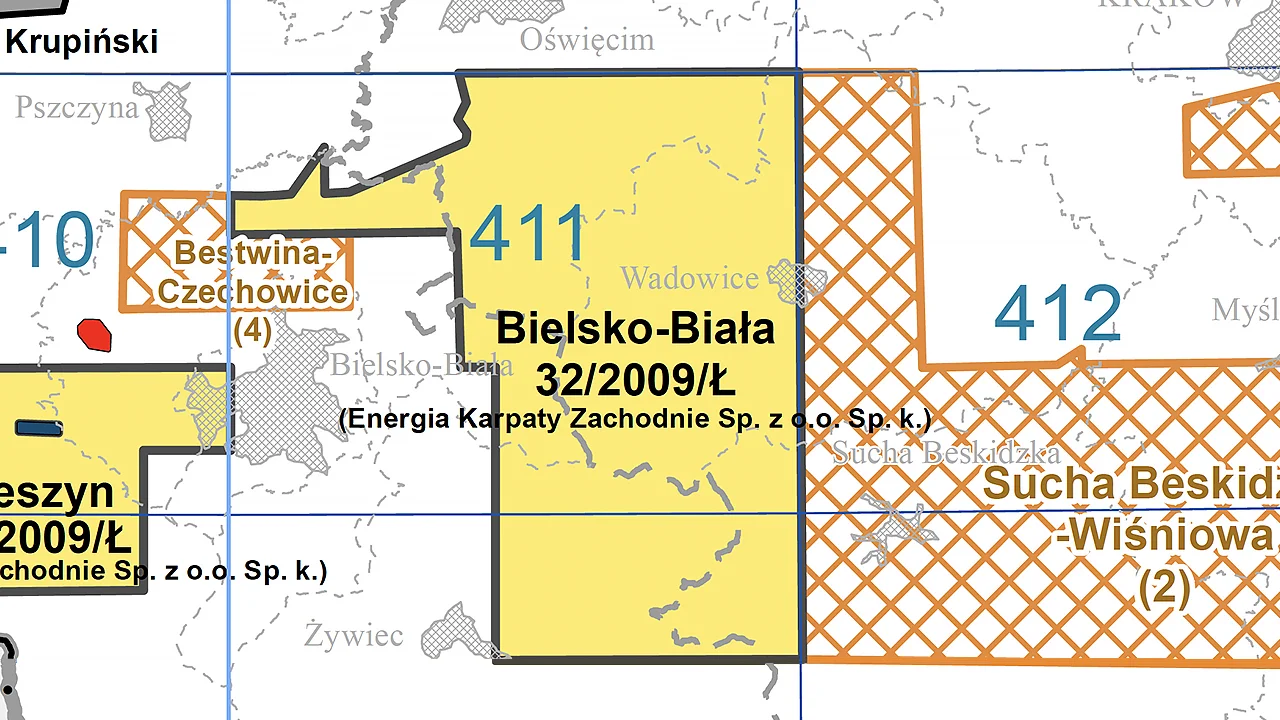Natural gas deposits in the Beskid Żywiecki region - geological and economic overview
The Beskid Żywiecki region hides valuable geological resources - one of them is hydrocarbon deposits, including natural gas.

Introduction
The Beskid Żywiec region, located in the southern part of Poland, is known primarily for its tourist and natural values. However, in addition to beautiful landscapes, forests and mountain peaks, it also hides valuable geological resources. One of them is hydrocarbon deposits, including natural gas, which have been the subject of geological research and consideration for potential economic use for many years.
Geological characteristics of the region
Beskid Żywiecki belongs to the Outer Carpathians, built mainly of fleece rocks - alternating layers of sandstones, shales and marls, formed during the Cretaceous and Paleogene periods. The tectonic arrangement of these rocks, with numerous folds and slips, favors the formation of gas traps.
Numerous seismic works and exploratory wells were carried out in this area, which indicated the presence of structures of an oil and gas bearing nature. Of the greatest importance here are anticlinal traps, in which gas accumulates in convex rock structures, as well as fault zones, which play the role of both migration routes and barriers for hydrocarbons.
Devonian deposits and their significance
In the broader geological context of southern Poland, mention should also be made of Devonian works, which constitute an important element of the geological construction of the Małopolska basin and the areas adjacent to the Carpathians. Devonian rocks - mainly limestones and dolomites, which are remnants of the Varisian tectonic floor - often act as reservoir rocks for hydrocarbons and lie in the bedrock of the Carpathian subsidence. It is in them that numerous oil and natural gas deposits in the Lachowice, Podkarpackie and Lubelskie regions.
Documented by deep boreholes, the presence of gas in tectonic Devonian traps increases the potential for exploration. These traps can constitute main or additional perspective horizons.
Natural gas deposits in Beskid Żywiec
Although Beskid Żywiecki is not the main center of hydrocarbon extraction in Poland (such remains Podkarpacie and Than Polski), the results of the research indicate the presence of promising resources.
Of particular interest are:
- Jordanov and Sucha Beskidzka regions - where structures that could constitute potential gas traps were identified,
- the area along the Skawa and Koszarawa valleys - characterized by favorable geological conditions for gas accumulation,
- the vicinity of the town of Lachowice - where the occurrence of fault zones and local lithological traps was found in the fleece formations, mainly in the Istebnian sandstones and the Magura layers. Geological-seismic analyzes indicate that they can favor the accumulation of deposits of gas, trapped in crevices and pores of the rocks.
Economic Importance and Prospects
The exploration and exploitation of natural gas deposits in the Beskid Żywiec region could contribute to:
- Diversification of energy sources at local and national level
- development of energy infrastructure in southern Poland,
- increase the country's energy security through partial independence from gas imports.
Summary
The Beskid Żywiec region has a great geological potential in terms of natural gas deposits. In addition to the Cretaceous-Paleogene flysch, it is also worth considering deeper Devonian structures, which in other parts of Poland played a key role in the formation of hydrocarbon deposits.
However, exploitation opportunities should be considered in the context of sustainable development - with respect for the natural environment, the local community and the tourist values of the region. Beskid Żywiecki may in the future become an example of a place where modern mining technologies coexist with the protection of nature and cultural heritage, and natural gas - both from the fleece and potentially from the Devonian deposits - will play the role of an important element of the local and national energy economy.
